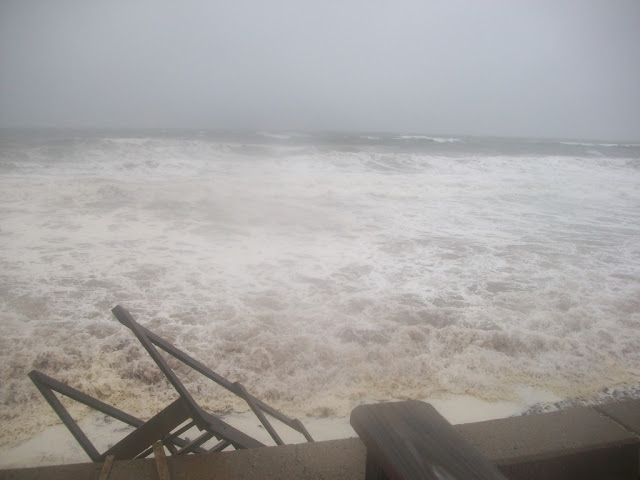Pro Cliff Diving From The Bourne Bridge.. Why Not?
Boston Harbor just recently hosted the Red Bull Cliff Diving World Series, although they didn't actually use cliffs. One would think that cliffs are essential for cliff diving, but not in Massachusetts.
Nobody died, it must have made some money, it brought great visibility to an obscure sport and it made at least one local writer think of possibilities.
Since cliffs aren't really needed for cliff diving (which, if you use the technical terms, is actually High Diving), and since the event seemed somewhat successful, it does make your author wonder what other Massachusetts venues could host such an event.
One place stands out above all the others. The Bourne Bridge gets the duke over her Sagamore sister because she has better parking.
It's not as crazy as it sounds, although it is pretty close.
A high dive has a technical definition, involving at least one somersault and being able to exit the water under your own power. There is also something about not making a big splash (which eliminates cannonballs, and- thusly- me), but I was mostly hunting water-depth information and only scanned over the rulebook stuff.
The world record high dive is around 172-192 feet (there are technical objections to the higher numbers by purists), by a bunch of people. Divers have made dives from 174 feet and even 192 feet, but those men broke their leg and back respectively, could not exit the water by themselves and thus are mere footnotes in this story.
The Bourne Bridge has a 135 foot clearance at mean high tide, meaning that it is 135 feet from basically the road to the water. This is well within the range of the lower ranks of the elite cliff divers. It might even be seen as a mere practice run by one of those Polynesian, Superfly Snuka looking divers who were the sport's elite back in the 70s when it was on Wide World of Sports. WWOS was ESPN before they had ESPN, kids.
The Cape Cod Canal, which runs under the Bourne Bridge, has a controlling depth of 32 feet. "Controlling depth" means, uhm, OK, I have no idea, but it makes me think that the Canal is 32 feet deep. I'm not making the jump anyhow, so next paragraph.
If you know what you're doing and have trained a lot, you don't really need that much water to land in. I saw a guy land a dive into a cup of water, although that was in a Bugs Bunny cartoon. I was surprised to learn that Bugs physics actually are compatible with real world practice, and you can frogsplash from 30 feet up and live to tell the tale with only 12 inches of water in a kiddie pool to land in.
In case you are wondering about the survivability of a leap off the Bourne Bridge, there are some stats. Between 1967 and 1977, 36 people died after leaping off the Bourne and Sagamore Bridges. Suicide deterrent barriers began to be erected in 1973. There were another 24 attempts that either ended with a non-fatal leap or the person being stopped before jumping. I do not know how many of the 24 were people who leaped and lived. The numbers may be fudged by civic-minded coroners listing suicide planchas as "drownings." Ironically, these suicide launching pads were both built during the Great Depression.
While I didn't look all that hard, there seemed to be no information available online about how many of those 60 jumpers were elite-level South Seas cliff divers (Editor's Note: The male and female world record dives are held by Americans) with decades of rigorous training.
Bottom line? It can be done.
Cape Cod does have one drawback for this. We are a popular place for sharks, and the Canal is an ocean river between Buzzards Bay and Cape Cod Bay. Every fish in the sea, both great and small, swims through there. Sharks are considered to be opportunistic feeders, often following fishing boats looking for a treat. There are stories of a bridge diver in Croatia or somewhere getting snatched by a Wels Catfish, but that is most likely silly talk. Here, however, we have plenty of sharks who would be happy to eat food that literally dropped into the water in front of them.
The benefits are many, however.
Bourne has bike paths on either side of the Canal from which people could enjoy the spectacle. They have ample food and drink nearby. There are numerous hotels in the area. They are right off a major highway. They have enough parking to accommodate a Scallop Festival, which probably drew a bigger crowd than this would draw.
If fear overcomes ambition, we could always lower the railroad bridge and shift from High Diving to Belly Flops. That might be more entertaining and YouTube viral-friendly, anyhow.
I don't know if there is a World Belly Flop championship, but I'd gamble that we could steal it from whatever town (Editor: It's in Norway, also sponsored by Red Bull) currently hosts it. We have better parking than other local dive-bridges, like the Powder Point Bridge in Duxbury.
Bourne is the Cape's weak sister, considered flyover territory by tourists and a buffer zone by the other Cape towns. Like every town, we thrive when plump with tourist dollars. We have to create our own opportunities, and inspiration is an important part of that.
Bourne, and especially Buzzards Bay, are not a threat to host the Summer Olympics any time soon. Sometimes, smaller is better. People will come to see it. The town will fatten itself at their expense. It's risk-free... well, almost.
It's a very dangerous sport. However, the people who do it train arduously, and know the risks. You can be as sad as you want when one of them pays the price at Terminal Velocity, but you can't really be surprised.
"Climbed up real high/now fall down real far."



.jpg)

Comments
Post a Comment